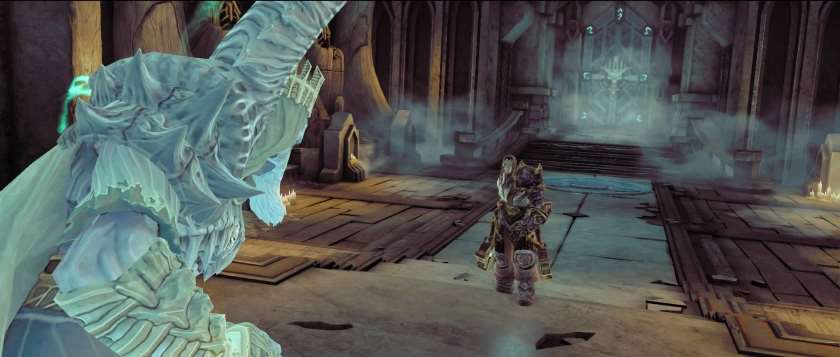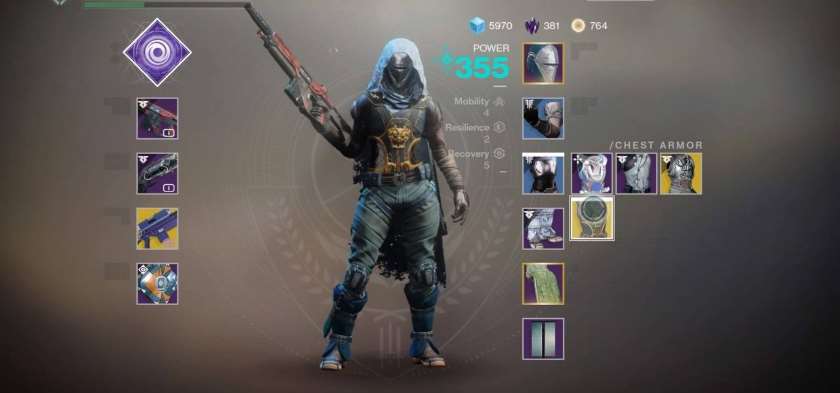Replayable

I don’t really keep up with what metrics are used to determine a game score these days. Despite writing about games constantly, I keep up with very little games writing in the greater world. I read headlines that catch my eye or the odd post from a friend here and there, but unless your name is Shamus Young then I’m not really keeping up with your work.
To that end, I don’t know if a game’s “replayability” remains a factor in its final score. When I was younger, this notion of “replayability” was meant to capture how enjoyable a game was to return to once the credits rolled. It’s an understandable metric when you consider the arcade origin of games, but even by the Super Nintendo it was becoming an oddly subjective variable that could only be determined by a series of factors.
While it’s been a long time coming, this past year has driven me to truly question the way we value this “replayability”. I touched on some of these revelations back in February in regards to my approach to discussing and analyzing games. The latest catalyst of change, however, was a return to Destiny 2.
In my years listening to the GamersWithJobs podcast and being a part of its community, I found myself feeling like a bit of an oddball without that one game I spent an irrational amount of time on. I had nothing like Sean “Elysium” Sands has with Europa Universalis. After listening to reader e-mails and seeing other members of the forum mention their own primary gaming pillars, I felt as if my approach to games was somehow broken. The last time I had any sort of regular game I played was Left 4 Dead with a crew made up of former Wii60 community members, and before that was Halo: Combat Evolved.
While my hours pale in comparison to that of many other dedicated players, Destiny was the first game to feel like my “pillar”. Like Left 4 Dead it became a regular romp with friends in evenings and a consistent fallback when I simply needed something to play, regardless of mood. I finally had a game that was a constant in my life, rather than something that fell in and out of my disc drive in that seemingly endless parade of mass consumption.
This summer, dissatisfied with the content in both Curse of Osiris and Warmind expansions, I finally chose to set Destiny 2 aside and move on. This move came just as I was not only playing through new titles such as God of War, but also seeking to replay the Tomb Raider franchise both in preparation for Shadow of the Tomb Raider and for a new video. My philosophy to only make a video on a game I’ve played at least once before – making the recording session a more informed opinion rather than initial impression – was resulting in a new desired habit.
This week I’ve started my analysis of Shadow of the Tomb Raider, an analysis that can more accurately compare it to the prior titles due to my recent return to them. Two weeks ago I reflected upon my newly rediscovered love of Darksiders, played through once more so that I could freshen myself up on the story for the upcoming Darksiders 3. Following that playthrough of Darksiders I had finally purchased Forsaken, the latest expansion for Destiny 2, and immediately it began to interfere with my replay of Darksiders 2 and my progression through Octopath Traveler.

He is known by many names… Death… The Reaper… Kinslayer… but here in the afterlife, we call him… Errand Boy!
I certainly enjoy playing Forsaken, and I at some point may write up my thoughts on what it manages to get right. However, it and Darksiders 2 seemed to have a surprising amount in common. Both games were structured around my being an errand boy, fetching MacGuffins or completing tasks for those that would be named “quest giver”. The end result is the same: a feeling of bloat and a most uncomfortable padding of steel wool. Whereas Darksiders was a tightly constructed game where each upgrade served a direct purpose, Darksiders 2 instead spread its ideas out across far too many dungeons and replaced purposeful items with randomized “loot”. Switch over to Forsaken, and I find myself forced to dive into familiar Lost Sectors or retread old mission ground for the chance at more powerful gear.
I do not regret my time with Darksiders 2 because I was able to learn more about why the game failed to work for me as well as the first. I also do not regret my time because I knew it would be over eventually. In fact, I spent a total of about twenty-five hours on Darksiders 2.
Forsaken – and Destiny 2 as a whole – has a lot in common with Darksiders 2 in that some of its missions are decidedly superior to others. The bulk of it may feel padded out, but occasionally you’ll find yourself an encounter that truly stands out as a polished experience. The difference is you’ll play those twenty-five hours, then you’ll play twenty-five more, and still you’ll dedicate another twenty-five hours until the next expansion releases. At that point the carrot and stick are moved even further away, beckoning once again that you give chase.
Like the arcade games of old, Destiny 2 yearns to have a strong enough set of mechanics that will keep the experience engaging no matter how many hours you invest in it. On this end they succeeded. I often feel as if I don’t really need any other first-person shooter as long as I have Destiny 2 to log into. However, those old arcade games also relied on their increasing challenge and the bragging rights of a high score to encourage players to return.
The NES and SNES removed the communal context of the arcade, and with that competitive angle high scores were abandoned. By the time the SNES rolled around studios began developing games with the intent of being completed. The rising difficulty curve was maintained and started being refined, but it was no longer a requirement to make games difficult enough to devour more quarters and coax and tease players with the promise of progressing to unseen territory.
Replayability as a consumer metric in the 90’s was effectively the measure of a game’s worthy of purchase. Was it a better rental or was it something you’d want to return to again and again? Somehow this metric became less important. Maybe it was the economy, maybe it was GameStop’s under-handed tactics to try and coax players into valuing a game less. Regardless, the business had to evolve in order to try and keep players from trading those old titles in. First it was tacked on multiplayer, then it was massive open-worlds, and in a game like Destiny 2 we’re seeing it in loot-based progression systems promising slightly better equipment.

All that stuff you worked so many hours for in previous expansions? Don’t worry, that’s all trash now.
I’ve seen people pointing at the high praises titles like Red Dead Redemption 2, God of War, and Marvel’s Spider-Man have been getting to declare that “single-player gaming is not dead”. However, I would wonder if the simple pleasure of experiencing a game is dead in an effort to chase illusory trinkets of progression. All of these games have skill trees or icons littering their over-world maps, desperately trying to please the player with the knowledge that there are things to do! Almost as if a player is incapable of finding joy in a gameplay experience itself.
Which is what made Darksiders so refreshing. It certainly had its objective markers and progression, but it was on a far smaller scale and more intently designed. Each dungeon was unique and filled with ideas. Rarely did it feel padded like its larger brethren. It was as long as it needed to be and its story told as much as was required.
Perhaps we need to stop asking ourselves what tricks and tactics a game uses to make itself worth returning to. Perhaps we should stop considering a game whose credits have rolled without purpose. Maybe we need to remember the joy felt in those childhood years when you replayed an excellent game for the fourth or fifth or even fifteenth time, trying a new difficulty level, self-administering a handicap to only use certain weapons or refrain from using specific items.
After my joy of returning to both the Tomb Raider and Darksiders franchises, I’ve made a decision to try and tackle older games whenever I have a free spot in my gaming schedule. I’d love to go back and revisit Arkham Asylum in 2019, for example, and haven’t played through a single Bioshock game in years. While I’ll be revisiting some old favorites for the YouTube channel, I think I’d love to just play some of these great games for the sake of playing them. For getting to know them better. For understanding what they have that their competitors lack and vice versa.
I’ll continue playing Forsaken, but I’m done chasing its chores for its own sake. If I load it up, it will be so that I can scratch an itch that only the currently running Haunted Forest or finally possible Escalation Protocol can reach. Otherwise… well, I’ve never played it before, but I think I’ll be moving on to Devil May Cry. I hear it’s pretty good, and I look forward to trying the premiere title that was once a Resident Evil game.


